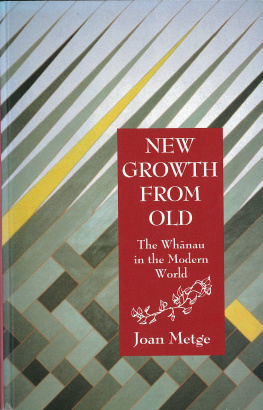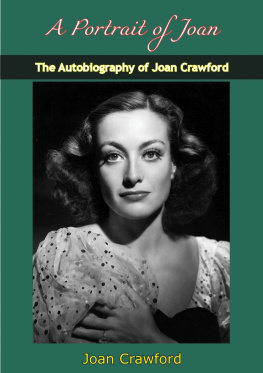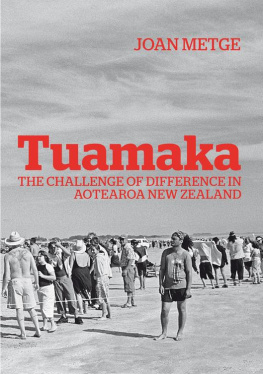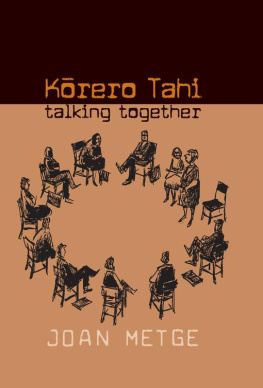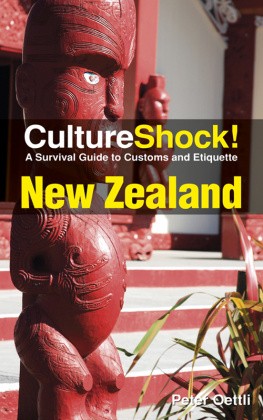Routledge Library Editions
RAUTAHI
ANTHROPOLOGY AND ETHNOGRAPHY
Routledge Library Editions
Anthropology and Ethnography
SOUTH PACIFIC AND AUSTRALASIA
In 9 Volumes
I | The Great Village | Belshaw |
II | Under the Ivi Tree | Belshaw |
III | The Chimbu | Brown |
IV | Mambu | Burridge |
V | Sorcerers of Dobu | Fortune |
VI | Migrations, Myth and Magic from the Gilbert | Islands Grimble |
VII | A Diary in the Strict Sense of the Term | Malinowski |
VIII | Rautahi | Metge |
IX | Coming into Being among the Australian Aborigines | Montagu |
RAUTAHI
The Maori of New Zealand
JOAN METGE
First published in 1967
Reprinted in 2004 by
Routledge
2 Park Square, Milton Park, Abingdon, Oxon, OX14 4RN
Transferred to Digital Printing 2006
Routledge is an imprint of the Taylor & Francis Group
1967, 1976 Joan Metge
All rights reserved. No part of this book may be reprinted or reproduced or utilized in any form or by any electronic, mechanical, or other means, now known or hereafter invented, including photocopying and recording, or in any information storage or retrieval system, without permission in writing from the publishers.
The publishers have made every effort to contact authors/copyright holders of the works reprinted in Routledge Library Editions Anthropology and Ethnography. This has not been possible in every case, however, and we would welcome correspondence from those individuals/companies we have been unable to trace.
These reprints are taken from original copies of each book. In many cases the condition of these originals is not perfect. The publisher has gone to great lengths to ensure the quality of these reprints, but wishes to point out that certain characteristics of the original copies will, of necessity, be apparent in reprints thereof.
British Library Cataloguing in Publication Data
A CIP catalogue record for this book is available from the British Library
Rautahi
ISBN 978-0-415-33057-2
ISBN 0-415-33057-2
Miniset: South Pacific and Australasia
Series: Routledge Library Editions Anthropology and Ethnography
The Maoris of New Zealand
Rautahi
Joan Metge
First published in 1967
This revised edition first published in 1976
by Routledge & Kegan Paul Ltd,
39 Store Street,
London WC1E 7DD
Broadway House,
Newtown Road,
Henley-on-Thames,
OxonRG91EN and
9 Park Street, Boston,Mass. 02108, USA
Set in Monotype Times Nes Roman and printed in Great Britain by W & J Mackay Limited, Chatham
Joan Metge 1967, 1976
Nopart of this book may be reproduced in any form without permission from the publisher, except for the quotation of brief passages in criticism
ISBN 0 7100 8352 1 (c)
ISBN 0 7100 8381 5 (p)
Royalties from the sale of this book are paid into the Joan Metge Charitable Trust and disbursed for Maori purposes, especially education.
To
Paihana Taua, Reihana Matiu, Rarawa Kerehoma, Miriama Taylor,
Mika Nathan, Tiki Walters and Waata Te Pania of Te Rarawa
Sue Te Tai and Rpeka Te Paa of Ngpuhi
Rangitaua Tpara of Waikato
Kingi Wtere of Ngti Maniapoto
Maharaia Winiata and Mria Htere of Ngti Ranginui
Rniera Kingi and Hhepa Tepa of Te Arawa
Pita Tpene of Ngti Twharetoa
Hirini Twhai, Mani Waititi and Hoani Waititi of
Te Whnau--Apanui
Te Oenuku Rne of Ngti Toa and Ngti Raukawa
Ki a k outou, ki ng mtua m ng whaea
e moe mai n i Tua-whakarere
n koutou nei ahau i atawhai, i whngai, i penapena
in te taonga nei,
nku, otir n ttou ngtahi.
Nu te rourou, nku te rourou,
k k te kete.
The work is not mine but ours.
Plates
Photographs are by John Miller unless otherwise indicated
Tables
Figures
The figures were all drawn by Mrs Barbara Winchester of Wellington
This book had its beginnings in Kaitaia in 1959 when Matiu Te Hau, Maori Tutor-Organizer for the Department of Adult Education at the University of Auckland and a long-time personal friend, asked me to give four weekly lectures on Maori society today at Kaitaia College. The series was attended by Maoris and Pakehas in roughly equal numbers. The Pakehas had mostly had long association with Maoris as neighbours, school-mates, work-mates and employers. The Maoris included local elders and a contingent from Kotare, the rural community where I was currently completing my second fieldwork term. They came partly out of friendship and partly to hear what she is saying about us. Facing such an audience was a daunting experience, but a most rewarding one. At the end of the first lecture, satisfied that I was talking in general terms and not betraying confidences, Maori spokesmen expressed approval in formal speeches: as one said, we recognize ourselves in what you say, though we would have put it differently. From then on they threw themselves wholeheartedly into the discussion. From the comments the Pakehas made and the questions they asked it became apparent that there were many things they did not know or misunderstood, but also that they sincerely wanted to learn. As the sessions proceeded, they developed into a direct and increasingly frank dialogue between Pakeha and Maori in which grievances were aired and misunderstandings sorted out. I saw for myself how fruitful direct encounter could be, and from that time on I have directed all my work to that end.
In the following years the four lectures given at Kaitaia grew into a series of ten presented several times a year for the Department of University Extension (formerly Adult Education) in Auckland and at weekend schools in other parts of the Auckland University district; a cyclostyled version was produced as a Discussion Course posted out with a box of books to adult education groups in rural areas; and the Discussion Course in its turn provided the framework for the first edition of The Maoris of New Zealand. Since then the latter has also been used as a Discussion Course by the Department of University Extension at the Victoria University of Wellington. At each step in its development the text was tested on live audiences including Maoris and associated whenever possible with visits to





